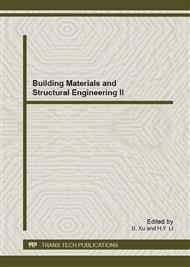p.170
p.179
p.183
p.189
p.195
p.199
p.203
p.208
p.213
Study of Waste Rigid Polyurethane Plastic Foam Insulation Recycling and Recovery
Abstract:
Extensive application of rigid polyurethane foam leads to a huge amount of waste after reaching their useful life. Recycling of this waste can protect the environment effectively. In this paper, mechanical recycling was employed in the preparation of the recycled insulation board. The relationship was represented between the amount of water-soluble PF and aqueous polyethylene wax used and thermal conductivity, along with the compression performance of the material. A result of better property was observed when the ratio of rubber of 15% water-soluble PF and 3% aqueous polyethylene wax was employed.
Info:
Periodical:
Pages:
195-198
Citation:
Online since:
August 2013
Authors:
Keywords:
Price:
Сopyright:
© 2013 Trans Tech Publications Ltd. All Rights Reserved
Share:
Citation:


